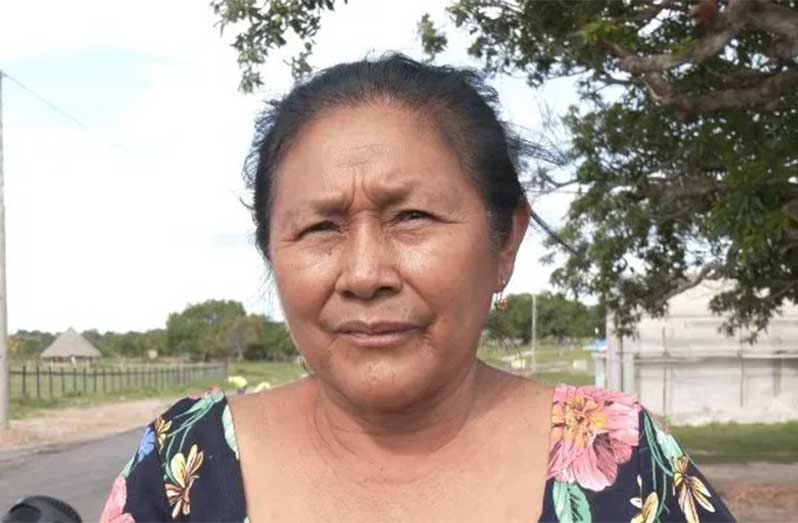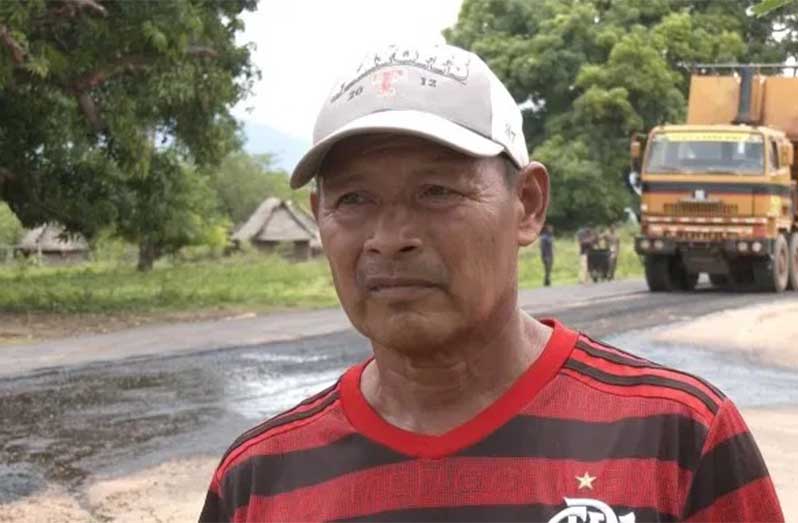THE daily challenges against dust and mud are finally ending for the residents of Karaudarnau, Nappi, Shulinab, and Awarewaunau, with the government’s injection of $800 million into upgrading the internal roads of these Region Nine villages from laterite to asphaltic concrete.
To ensure the substantial transformation meets the needs of the communities, residents were given the option of selecting the most impactful locations for construction.

This community-based approach by the government allowed the project to benefit thousands of hinterland residents from the various Amerindian villages.
In Shulinab, where approximately 480 people reside, the impact of the newly constructed road is already being felt.
Village Councillor Brandon Felix provided the Department of Public Information (DPI) with a detailed explanation of how the roads are benefitting the community.
“Our road wasn’t really how it is now, and I think it is a great help, especially with our schoolchildren going to school. Before this, it was muddy, and they couldn’t get to school. And if they had shoes, they would take off their shoes and go with slippers to school and change their shoes in school,” Felix said, adding:
“Today, with this road, I say it is very helpful to the community, especially with the schoolchildren going to school.”
Felix also expressed appreciation for the renewed attention being placed on the development of hinterland communities by the government.
“What I am seeing here now is that they are very interested in the hinterland people in our community,” he stated.
Karaudarnau, home to 1,092 residents, has seen a similar transformation.
Toshao of Karaudarnau, Apollos Issacs described the previous road conditions as muddy during the rainy season, and overwhelmingly dusty during the dry months.
“The road before the asphalt road was terrible. Many of our schoolchildren don’t get to wear their boots to school, and the dry season is very dusty for us at the schools, and also for business people,” he said.

However, the Toshao dubbed the new road upgrades a ‘game changer’ that will fuel economic growth and development, as it will boost tourism and the community’s farm-to-market prospects.
One resident, Berlinda Xaviar, emphasised the exponential differences the road has brought to her daily life.
“This road that we got recently, I have seen an impact. The children would be safe, their boots, their socks would be in better condition, since the road is just around the area,” Xaviar said.
“Before, we had a lot of dust; dust all around the village, especially when the big trucks are moving around; you would see a dusty road, and that would cause accidents. But now when you ride, everything is just clear. My kitchen used to be dusty, and my little business was affected. Now, everything is just good,” she added.
The construction of these roads is not just a physical shift, but signifies a broader change in how hinterland villages are integrated into the government’s national development agenda.
It also merges government’s effort to enhance connectivity and bridge access to education, health, business, and tourism opportunities that are readily available in the coastland.

To further propel these efforts, the government has injected $7.2 billion to enhance the welfare of Amerindian communities in the 2025 budget. (DPI)



.jpg)








